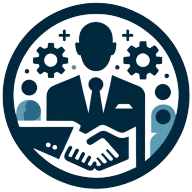How People Analytics Improves Diversity and Inclusion: 3 Examples
Delving into the landscape of diversity and inclusion, this article unveils the potent role of people analytics backed by expert insights. It sheds light on the strategies to enhance career opportunities, pinpoint disparities in hiring practices, and reveal concealed biases. The transformative examples detailed here are a testament to the power of informed decision-making in fostering an equitable workplace.
- Increase Access to Career Opportunities
- Identify Gaps in Hiring and Retention
- Uncover Hidden Bias in Hiring Process
Increase Access to Career Opportunities
Improving diversity and inclusion starts with an understanding of limited access to opportunity for marginalized communities and establishing the goal to increase access to career opportunities and progression. This takes understanding the data, identifying areas of potential bias and barriers, developing strategies to mitigate bias and barriers, then going back to the data to measure the impact. In collecting data, it is important to look at the quantitative data of hiring, promotion, resignations, and performance rates as well as the qualitative data of decision making, employee experience, areas of challenge, and themes of performance feedback. It is also important to track this over a set time period of 2-5 years to identify themes outside of internal or external situational changes. After you have a good sense of the data, look into the systems and metrics being used. Audit them to find out if the values being uplifted are not only reflected in the dominant culture, but rather capture values and skillsets that align with the position, team, and company. If changes need to be made, be sure to implement structures and criteria that reflect fair and transparent decision making, involving multiple stakeholders and pathways to success. Once these changes are implemented, set a time frame to reassess that allows for true implementation, training, and adoption without being too soon or too far out. The last thing you want is too many pivots to the initial change over a short period, which would render any impact data inconsistent and shallow.

Identify Gaps in Hiring and Retention
We used people analytics to identify gaps in our hiring and retention strategies related to diversity and inclusion. One key insight came from analyzing our applicant-to-hire ratio across different demographics. We found that certain groups were underrepresented in later hiring stages, indicating potential bias in screening or interviews.
To address this, we implemented structured interviews with standardized scoring criteria to reduce subjective decision-making. We also integrated skills-based assessments to ensure hiring decisions were based on competencies rather than background or affiliations.
Beyond hiring, engagement surveys revealed that employees from diverse backgrounds felt less included in leadership discussions. To improve this, we launched mentorship programs connecting underrepresented employees with senior leaders, which helped boost career progression and internal mobility.
By continuously tracking diversity metrics and refining our approach, we created a more equitable hiring process and a workplace where employees from all backgrounds felt valued and heard.

Uncover Hidden Bias in Hiring Process
I used people analytics to uncover hidden bias in our hiring process and make real changes to improve diversity.
When I analyzed our recruitment data, I noticed a pattern—certain roles had significantly fewer diverse candidates making it past the first interview stage. Instead of assuming the problem was a lack of applicants, I dug deeper and found that our job descriptions contained biased language that unintentionally discouraged some candidates from applying.
By tweaking the wording to be more inclusive and implementing blind resume screening, we saw a 23% increase in diverse hires within a year. My approach was simple: use data to identify the issue, test solutions, and measure the impact. People analytics isn't just numbers—it's a tool to drive meaningful change when used with the right intent.


